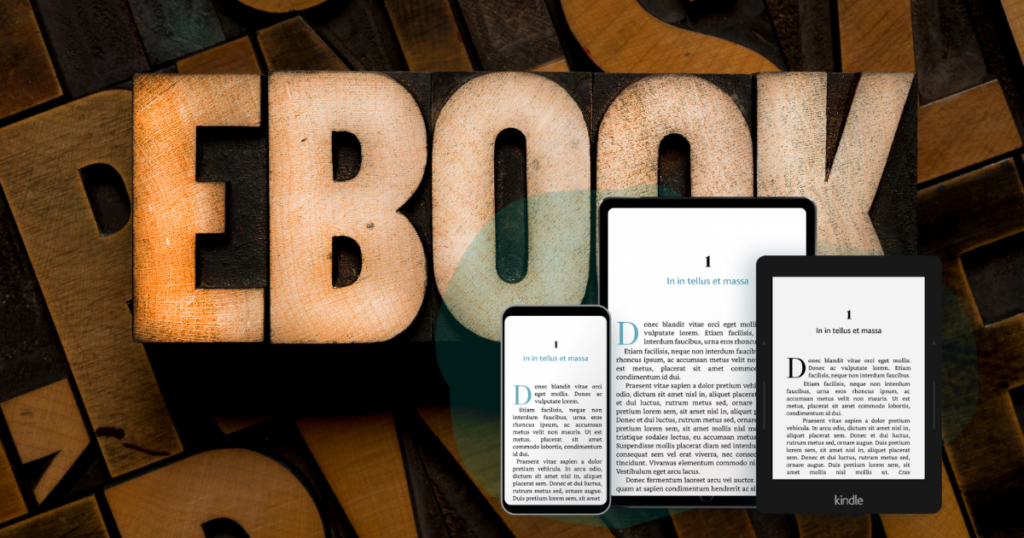Step by Step Guide for How to Publish an Ebook
Publishing an ebook has become a highly effective way to share knowledge, build a personal brand, and generate passive income. Creating and distributing an eBook is an effective way for B2B marketers to engage prospects throughout the complex buyer journey. Unlike other forms of content, eBooks provide in-depth knowledge that appeals to B2B decision-makers, addressing their unique needs and challenges.

Learning how to publish an ebook allows businesses to produce valuable resources that educate, inform, and build trust with potential customers at every stage—from initial awareness to final decision-making.
Why Ebooks Are a Great Passive Income Stream?
Unlike traditional publishing, ebooks are digital products that require no physical production, making them accessible to a global audience without the high costs associated with print. Ebooks can also be created quickly—sometimes in as little as one day. This flexibility allows experts, writers, and anyone with a valuable perspective to create a digital product that keeps selling long after its initial release. Plus, once the ebook is published, the ongoing income generated is mostly passive, especially with a strategic marketing plan in place.
Complete Steps for How to Publish an Ebook
Step 1: Assess Market Potential Before Writing
Before starting the writing process, it’s wise to assess the potential market for your ebook. Selling ebooks online has its own set of challenges, and it’s best to start with a clear understanding of your audience, competition, and sales channels. Consider the following factors:
- Define your target audience and the problems your ebook will solve for them.
- Decide if you should sell your ebook on platforms like Amazon Kindle, through an ebook publisher, or via your website.
- Plan how to reach potential buyers, whether through social media, email lists, or paid ads.
For example, if you have a social media following of 10,000 people, a modest conversion rate of 2% could result in 200 sales—a great start for any ebook writer looking to make passive income.
Step 2: Choose a Winning Topic
Choosing the right topic is crucial. Ideally, your ebook topic should align with your expertise and the needs of your audience. Research similar ebooks to see if your idea is already covered and what gaps you could fill. Competitive analysis is invaluable because it shows whether other ebooks on your topic are successful. If so, this could indicate a demand for your content, as long as you can provide a unique angle or added value.
Take, for example, the field of digital marketing. An ebook that covers a specific topic within that broad field—like social media algorithms or content strategies for 2024—can appeal to a well-defined audience. As an ebook writer, aim to provide fresh insights, useful strategies, and practical takeaways that readers won’t find elsewhere.
Step 3: Structure and Plan Your Ebook Content
Creating a well-organized structure for your ebook will save time in the writing process. Outline the main points you want to cover, and decide on a logical order that will engage readers. Your content plan should include the main chapters, subtopics, and any supplementary resources, such as checklists or templates, that will enhance your ebook’s value.
For instance, a typical structure might include:
Introduction – Set the stage by explaining what readers will learn.
Core Chapters – Cover each main topic in detail.
Conclusion – Summarize key takeaways and encourage readers to take the next steps.
When you have a solid outline, writing becomes much easier. Some ebook writers use tools like mind maps to organize ideas visually, while others prefer to start with a table of contents and build from there.
Step 4: Writing and Editing
With a clear structure in place, begin writing your ebook. Aim to complete a first draft without worrying too much about perfection. Writing in iterations—starting with a rough draft and refining it over time—can help you avoid getting stuck on specific sentences or sections.
Editing is crucial to ensure clarity and readability. You might consider hiring a professional editor or seeking feedback from a colleague. Remember, ebooks are products that readers purchase expecting value, so polishing your content can make a big difference in their perception.
Step 5: Formatting and Designing Your Ebook
A visually appealing and well-organized layout is essential to make your ebook look professional. Many ebook publishers recommend a clear, easy-to-read format with headings, subheadings, and bullet points where applicable.
If budget allows, consider working with a graphic designer who can create a visually appealing layout and cover. For a more DIY approach, tools like Canva and Adobe InDesign offer templates that make ebook design straightforward. The goal is to create a product that readers find visually appealing, easy to read, and enjoyable.
Step 6: Choose the Right Platform to Publish
Knowing the right platform to publish your ebook is key to reaching your audience effectively. Popular options include:
- Self-publishing platforms like Amazon Kindle Direct Publishing, which offer global reach.
- Ebook publishers that specialize in niche markets or offer high visibility in certain genres.
- Direct sales through a website, where you retain more profit but need a solid marketing plan to drive traffic.

Each platform has its pros and cons, so consider factors like reach, fees, and royalties when deciding. Amazon, for example, takes a percentage of sales but has a vast audience, while selling through your website might mean less exposure but higher profit margins per sale.
Step 7: Market Your Ebook
Marketing your ebook is essential for generating sales. Some proven strategies include:
- Send out a series of promotional emails to your list. Include sample chapters or exclusive discounts to incentivize purchases.
- Promote your ebook across social platforms, sharing value-packed snippets or graphics to build interest.
- Platforms like Facebook, Google, and even Amazon offer targeted ad options that can boost visibility for your ebook.
For sustained income, aim to maintain consistent marketing efforts. Even though ebooks can be a passive income source, occasional promotions or updates will help keep sales going.
Step 8: Analyze Sales and Make Improvements
After launch, track your sales and analyze which marketing tactics are most effective. Many ebook platforms offer detailed analytics, which can help you optimize your strategies and increase conversions. You may find, for example, that certain platforms perform better for specific genres or demographics, which can inform your future ebook launches.
To boost long-term sales, consider gathering reader feedback and updating your ebook as needed. Regular improvements can make your ebook a top choice for new readers, especially if you plan to make updated editions available.
Step 9: Scale Up with More Ebooks or Premium Offers
Once you’ve successfully published one ebook, scaling up by adding more titles or premium offers can be highly profitable. Many successful ebook writers create a series or expand into related topics, using each ebook to funnel readers into higher-priced offers, such as online courses or consulting services.
This approach allows you to leverage your expertise further and reach a broader audience. As you build a library of valuable ebooks, you’ll also develop a reputation as a reliable source, which can increase trust and sales over time. Once you learn how to publish an ebook, you can improve your marketing skills to reach target audience and sell more copies.


